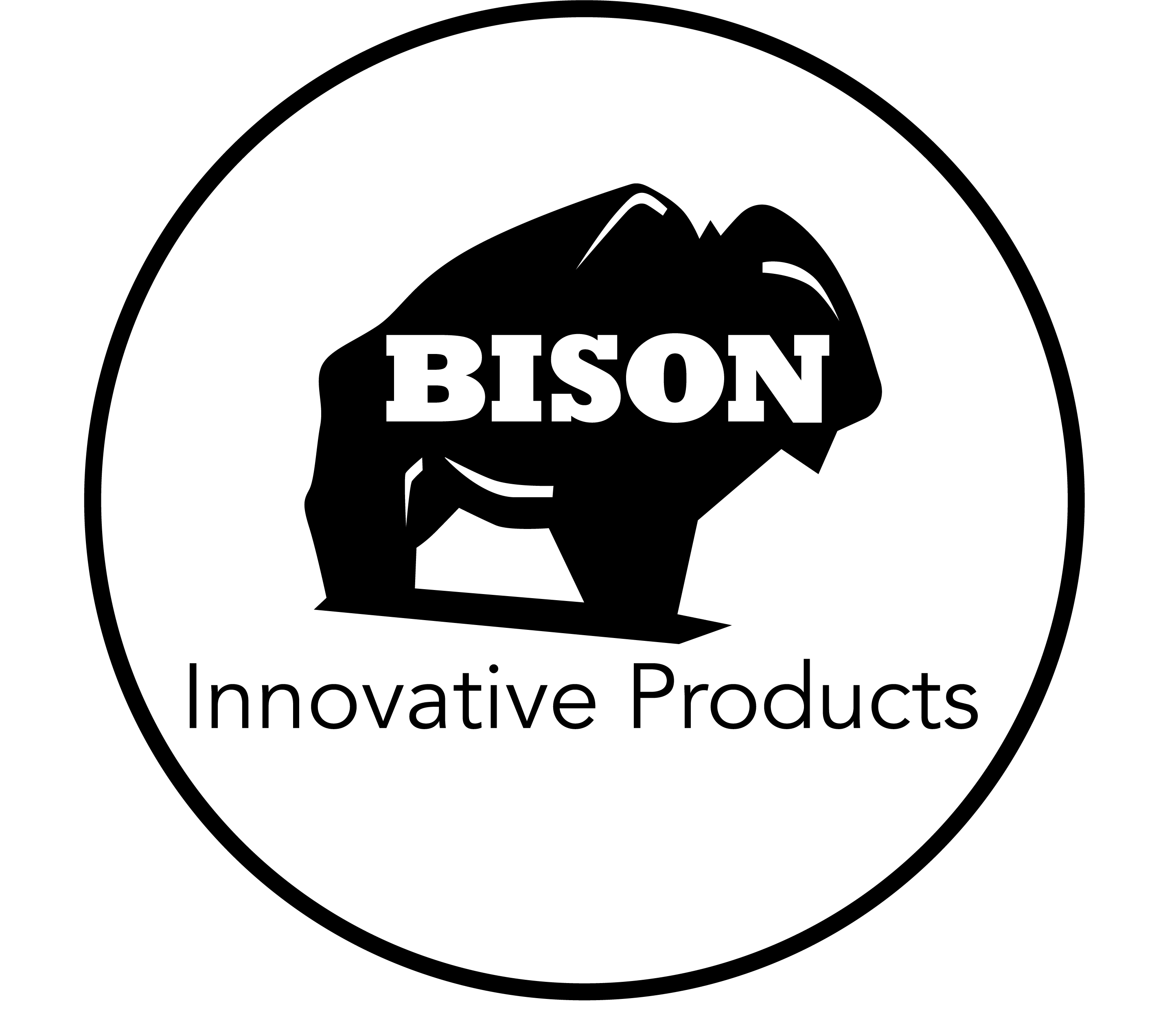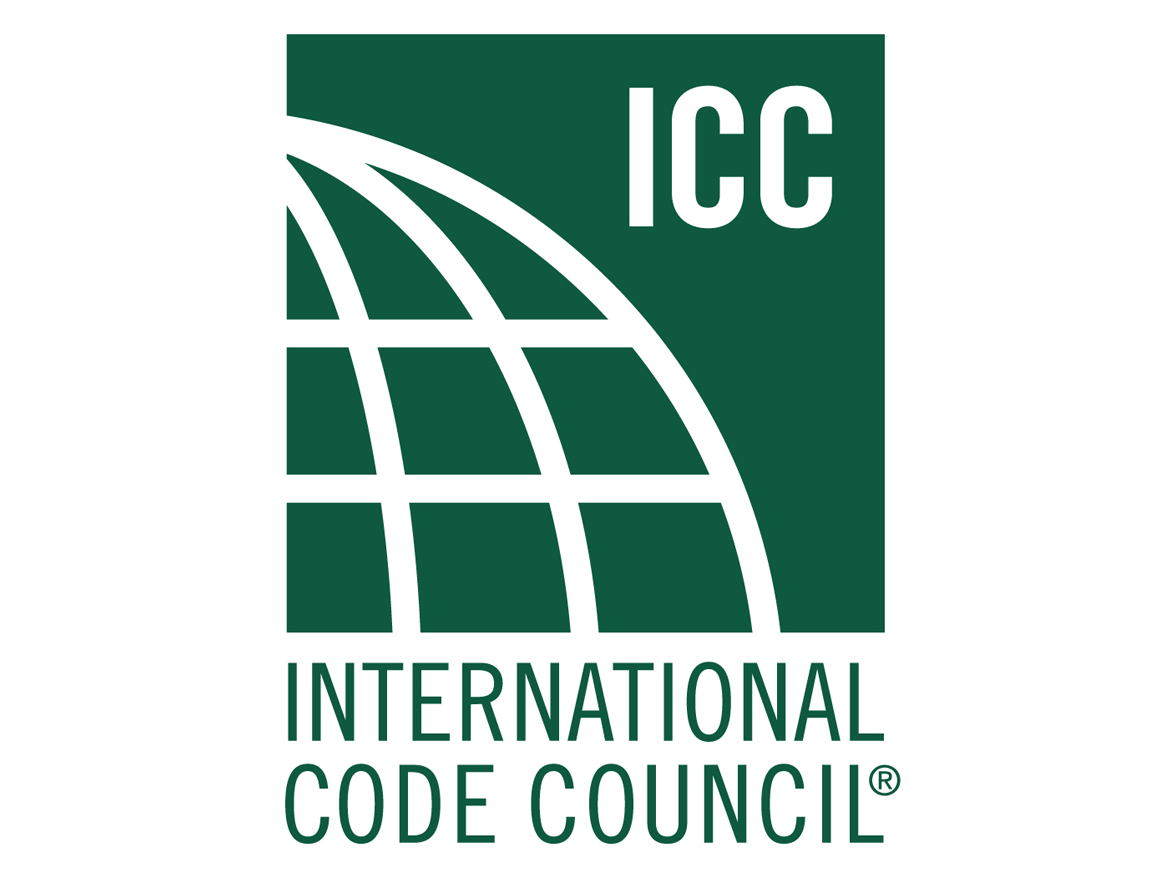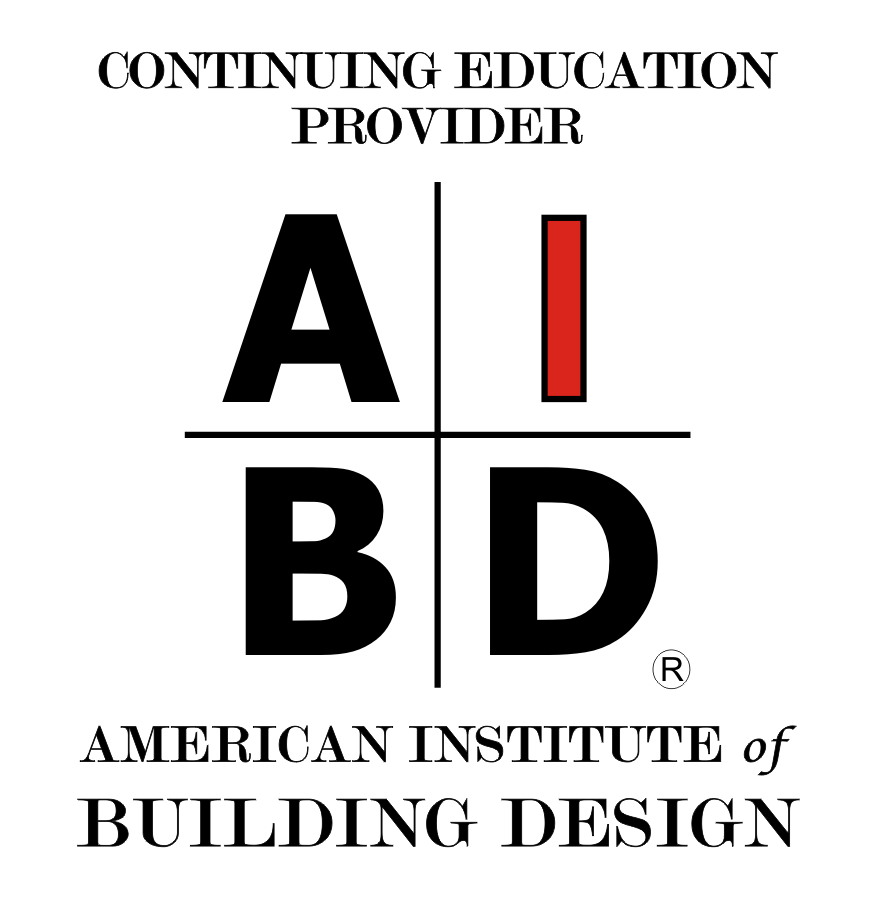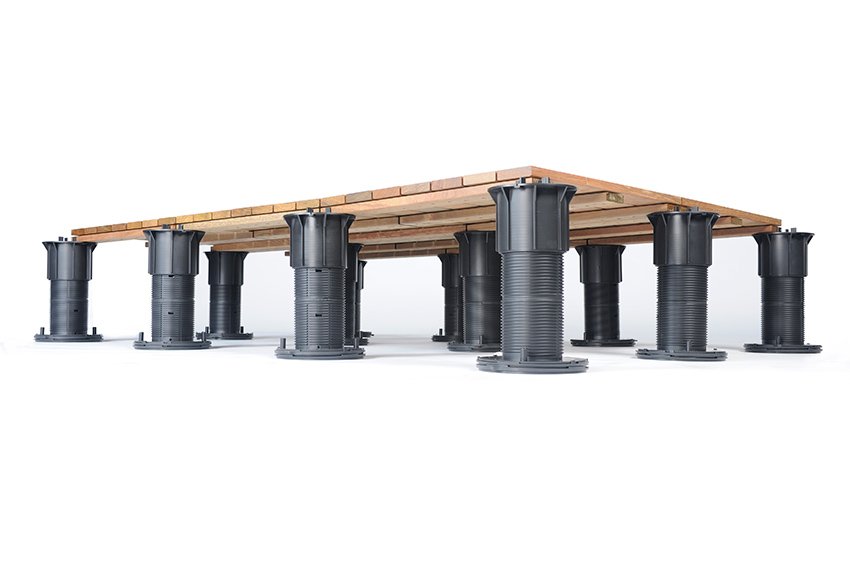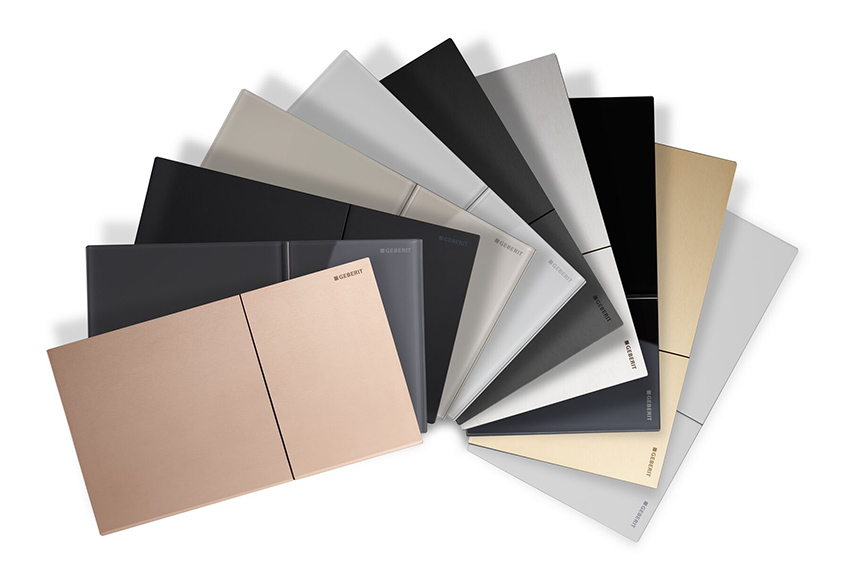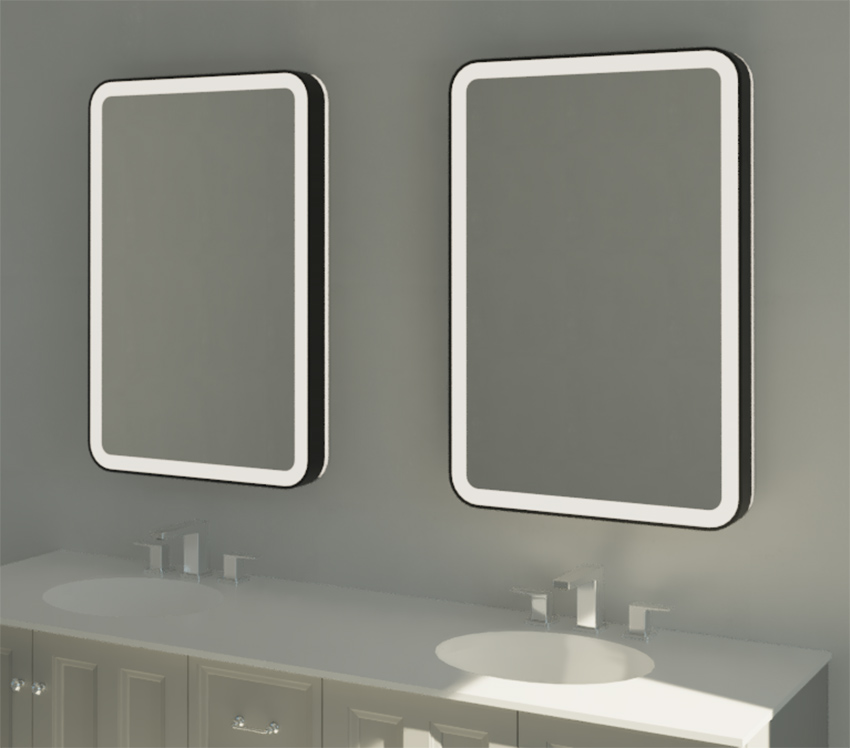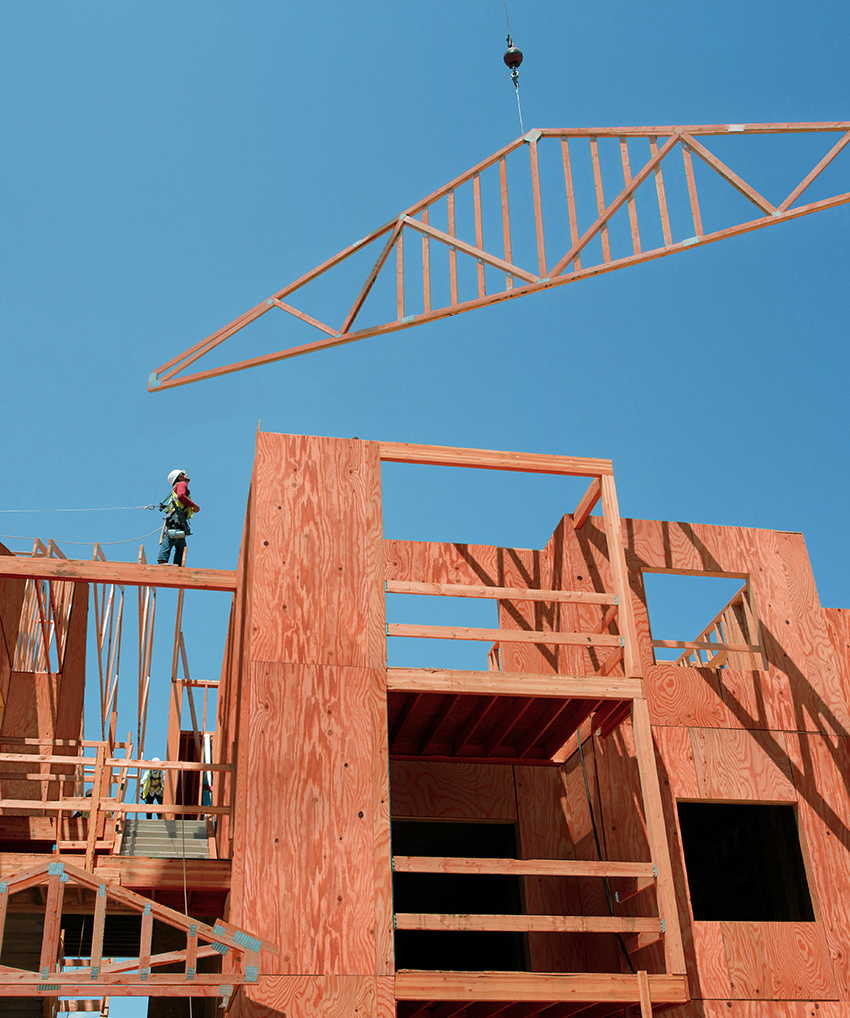
Photo: Max Tuohey; courtesy of JDS Development
Multifamily housing continues to be in high demand in many settings around the world including New York City where the Brooklyn Tower has been completed – designed by SHoP Architects for JDS Development.
Numerous publications have reported that urbanism, just like the human population, is on the rise all around the world. With that trend comes a denser built environment based on an urban fabric that promotes free circulation and multifamily, multistory housing. Even in predominantly suburban and rural settings, pockets of multifamily housing are found to create village-like atmospheres and walkable communities. In virtually all cases, good multifamily housing design includes comfortable, up-to-date living units combined with appealing common amenities with sustainable and green building design seen as a top priority for residents–and for sales efforts. In numerous housing markets, multifamily housing, such as condominiums or townhouses, is also seen as an affordable option for many with the purchase price of single-family housing out of reach for many first-time home buyers. With all of these considerations as a background, this course looks at some of the techniques, approaches, and latest product offerings available to satisfy some of these varied design criteria for successful multifamily housing projects.
DESIGNING OUTDOOR SPACES
While the tendency is to think first of the building when designing a multifamily project, the reality is that outdoor spaces are an important, and valuable part of any living arrangement. Such outdoor areas can be manifest in a variety of design features such as balconies, rooftops, terraces, and on-grade designs. These outdoor spaces allow residents and guests to enjoy the use of either an extension of indoor living areas or a separate, public outdoor amenity space. As such, they can provide users with desirable features such as outdoor kitchens, fire pits, bars, living areas, gardens, green roofs, pool areas, seating areas for reading, recreation spaces, and other desired uses.

Photos: John Cole; Courtesy of Bison Innovative Products
Standard outdoor deck components can be customized and used creatively to create sustainable and wellness-focused outdoor amenity spaces in multifamily buildings as shown here at the Reed Row Apartments in Washington, D.C., by R2L:Architects.
Such outdoor amenities are not only appealing and marketable to prospective residents, but they can also offer considerable benefits to the health and wellness of all who experience the natural elements of sun, wind, and vegetation. Rooftop decks help to boost morale and strengthen relationships within the community of residents in a multifamily building. They can also incorporate natural elements such as planters or vegetative materials and thus create biophilic design opportunities. Native plants and natural building materials offer occupants a visual and material connection with nature. Green spaces benefit occupants’ health and wellness by enabling programmatic flexibility; these spaces can be used for recreation, refuge, and/or restoration.
Raised Modular Decks
The means to create appealing outdoor spaces is often realized by using a raised modular deck system. Such modular systems are versatile and give architects and others the design flexibility to create unique and beautiful rooftop environments and outdoor spaces. By utilizing adjustable height pedestals to support the deck, uneven or sloped surfaces can be easily accommodated. Architects can include a mix of pavers and surface materials including wood, stone, structural porcelain, crushed rock, grating, artificial turf, concrete, and planter cubes and benches, to create unique, custom looks. Versatile, adjustable pedestal deck systems can be utilized over any structural surface–on bare structural decks, rooftop decks, roof membranes, green roofs, terraces, compacted grade, pavement, pool surrounds, or in water features. Through the modular design of surface materials and accessories, designers can create an abundance of different design visions without the need for custom or costly materials.
Sustainability Features
Some manufacturers are dedicated to decreasing their impact on the environment by designing products that are part of a more circular economic system, such as using recycled and recyclable content. Similarly, wood tiles can be crafted from premium-grade remnants and harvested in an environmentally responsible method designed to preserve the economic viability of rainforest hardwoods. Wood tiles can be associated with governing groups such as the Forest Stewardship Council (FSC) to ensure they address quality standards and best practices of wood acquisition and plantation farming.
Once installed, pedestal decks can help to reduce a building’s carbon footprint through a reduction in a roof’s ambient temperature, potential for green space, rainwater collection initiatives, and/or reduced need for roof replacement). A raised, air-permeable, open-grid pavement system can help reduce the cooling loads of the building and facilitate water drainage. Incorporating a pedestal deck system can also provide pedestrian access to green roofs.
Modular deck systems can contribute to well-known sustainability rating systems including LEED, SITES, WELL, and other green building certification systems. Incorporating outdoor raised deck areas in multifamily projects provides multiple opportunities to create more sustainable and healthier living environments.
FIRE SAFETY
Fire safety has long been a primary concern in all multifamily properties. While property fires continue to happen across all building types, one-or-two-family dwellings annually account for the largest number of fires followed next by apartment or multifamily dwellings. Of significance, when multifamily dwellings burn, they often impact more people and more households than single-family homes and lead the way in injuries and fatalities. This has been exacerbated by the recent growth in wildfires which has impacted entire communities. As such, many localities are adopting Wildland-Urban Interface (WUI) codes that require greater fire resistance in residential construction of all types in order to provide a larger time frame for people to escape fires. In all cases, the choice of materials used to achieve adequate or required fire resistance becomes a significant point of design and specifications.
One- and two-family construction is routinely based on wood framing and sheathing, but increasingly, so is multifamily housing. This is due to several factors. First, it is often the most economical choice that is easy to work with using well-known carpentry tools and methods. Second, wood is still one of the most environmentally friendly and energy/carbon-saving materials in construction. This has prompted the growth of multifamily buildings using wood structural systems and even mixed-use buildings with concrete “podiums” for the lower level(s) and wood-constructed dwelling units above. Finally, updates to the International Building Code (IBC) have recognized that wood members with larger mass or with fire-retardant treatment can be as safe or even safer than steel framing, which can lose its integrity during fires.
Designing with Fire-Retardant Wood
In light of all of the above, fire-retardant pressure-treated wood (FRTW) in the form of dimension lumber and sheathing are now readily available which are code-compliant solutions for exterior walls and roofing. In multifamily construction, it can also be used for separation between units in some cases. More specifically, FRTW is wood impregnated with chemicals during manufacture that, has been tested under ASTM E84/UL 723 “Standard Test Method for Surface Burning Characteristics of Building Materials.” In order to be code acceptable, the tested product must have a flame spread index of 25 or less and meet a Class A rating of 10 minutes plus no evidence of significant progressive combustion when the test is continued for an additional 20 minutes. While still considered a combustible material, code-acceptable FRTW does not support combustion, and its burning rate is limited when flame is applied.
The greatest advantage to using this type of product is found in the construction of mid-height multistory buildings such as apartment buildings built of the code-defined Type III construction. Type III-A includes exterior walls that carry a 2-hour rating with combustible materials allowed on the interior, but 1-hour rated floor. Type III-B is almost the same as III-A, but floors and roofs are not required to be fire resistant. FRTW is also permitted in some parts of Type I and II construction (often used in high-rise buildings) in certain locations as permitted in the IBC. In some jurisdictions, there is growing interest in protecting against wildfires by using FRTW in other building types as well. That means it could apply to Type IV construction for exterior walls and roofs and possibly even Type V if that were to be adopted.

Photos courtesy of ProWood
Fire-retardant pressure-treated wood (FRTW) is recognized as a code-acceptable option for framing walls and roofs for many multifamily buildings.
While this is all good news for those who design, construct, or own multifamily buildings, it must be noted that the treatment process can affect the wood. Depending on the wood species (spruce, pine, fir, etc.), the type of product (stud, joist, plywood, beam), and its application (wall, floor, roof), the structural strength originally associated with the untreated wood is reduced somewhat when treated with a fire retardant. Therefore, the FRTW manufacturer is required to provide strength adjustments based on the intended use of the wood, which must be factored into the structural design of the building. In practical terms, that may mean that FRTW plywood is approximately 1/8 inch thicker than its untreated counterpart. Dimensional lumber may or may not be impacted enough to change any lumber sizing during design but is readily calculable.
Overall, fire-retardant-treated lumber must meet IBC code requirements for fire-retardant-treated wood as defined in IBC 2303.2 for wood used as a construction material. It must also be labeled according to the requirements in IBC 2303.2.4. With all of the familiar versatility of wood framing and sheathing, FRTW allows for creative designs that are safe, code-compliant, and economical.
USING MIRRORS TO ENHANCE INTERIOR DESIGN
The interior design of multifamily living spaces, particularly bathrooms, often focuses on ways to help small spaces look or feel a bit bigger than they actually are. At the same time, they need to meet functionality requirements for convenience, cost limitations of development budgets, and market requirements for overall design quality. Often, this combination of criteria translates into clean, elegant, contemporary solutions that include not only material selections but also the selection of components and accessories that enhance the overall look of bathrooms in multifamily projects. In particular, the use of mirrors in such bathrooms becomes an interior design element that can address all of these design requirements and contribute to an overall living experience. Framed mirrors could act the same way as a piece of art that enhances a room, particularly if powder-coated colored frames are used. The mirror itself can reflect different room elements or aspects when viewed from different angles.
Mirror Types
While mirrors and medicine cabinets are common design components for bathrooms, there are lots of options to choose from. When selected and incorporated into an overall design, they can enhance the appearance and perceived quality of the entire multifamily property. From a marketing standpoint that means good interior design that includes tasteful, cost-effective lighting and mirrors can improve customer perceptions of a living unit. It can also be more advantageous to consider manufactured mirror products that meet not only the design requirements for a project but the construction schedule and cost aspects as well.
With the above in mind, here are some of the basic options to consider.
Frameless Mirrors: This is a classic, economical choice with crisp, clean edges that allow for full-width visibility and edge-to-edge reflection. It is great for areas with smaller dimensions or a tight-fitting installation. Installation is very straightforward with multiple mounting options available such as clips (metal or plastic), aluminum j-channel, standoffs, and mastic. The edges of the mirror can be flat-polished, pencil-polished, or beveled edge. They can be ordered in custom sizes but will likely be more economical when ordered in bulk for multiple dwelling units requiring the same size.
Floating/Infinity Mirrors: A more elegant option uses a frameless floating mounted mirror. The frame is wholly or partly concealed with a depth that places the mirror edges out from the wall surface, thus giving it the illusion of floating or extending into “infinity.” The frame depth is customizable to suit different design needs and theft-resistant concealed mounting is available. Such products are generally made to order in custom sizes but ordering in quantities may help with the pricing.
Framed Mirrors: Rectangular mirrors with a metal or wood frame can provide a traditional or contemporary look that can be selected to meet a range of design intents. Wood-framed products can be specified by selecting from a wide variety of molding profiles. Metal framed mirrors can have a clean and simple look with a stainless-steel frame and mitered corners. A variation on a flush, framed mirror is an ADA-compliant fixed tilt mirror, which has a frame that is thicker on the top than it is on the bottom in order to achieve the needed tilt angle for someone in a wheelchair to use. In all cases, the mirror frame can be integrated with a concealed mounting system which can reduce the time and cost of installation.
Rounded Rectangular Mirrors: For a more contemporary look, mirror products are available with a metal frame that has rounded corners and a small floating gap. Not only are they more elegant, but some have a very easy, safe mounting system, saving the building owner expense in the installation process. Rounded mirrors or pill-shaped mirrors are also seeing a resurgence in popularity.
LED Lighted Mirrors: Most bathrooms require lighting around the mirror, and LED lighting technology is being directly integrated with the mirrors. Whether lighted from behind (through a frosted or etched area) or a simple halo effect around the edge, this approach is becoming very popular with both renters and owners. LED technology draws very little power while giving additional ambiance to the installation. Upkeep is simple as the lights typically last 30,000 to 50,000 hours. The lighting not only provides even and useful illumination for the user but can enhance the design of the space with controllable light qualities. Mirrors can be backlit or side-lit with different frosting options over the LED lighting which can range in color between 3000k, 4000k, 5000k, and 6000k. In all cases, UL-tested and rated products are available and should be selected for electrical safety.

Photos courtesy of Meek Mirrors, LLC
The use of mirror products with different framed or frameless choices and finishes can enhance the interior design of multifamily bathroom spaces.
Regardless of the type selected, manufactured mirror products can influence the marketability and design quality of multifamily spaces while helping to meet budget and scheduling constraints.

Photo: Max Tuohey; courtesy of JDS Development
Multifamily housing continues to be in high demand in many settings around the world including New York City where the Brooklyn Tower has been completed – designed by SHoP Architects for JDS Development.
Numerous publications have reported that urbanism, just like the human population, is on the rise all around the world. With that trend comes a denser built environment based on an urban fabric that promotes free circulation and multifamily, multistory housing. Even in predominantly suburban and rural settings, pockets of multifamily housing are found to create village-like atmospheres and walkable communities. In virtually all cases, good multifamily housing design includes comfortable, up-to-date living units combined with appealing common amenities with sustainable and green building design seen as a top priority for residents–and for sales efforts. In numerous housing markets, multifamily housing, such as condominiums or townhouses, is also seen as an affordable option for many with the purchase price of single-family housing out of reach for many first-time home buyers. With all of these considerations as a background, this course looks at some of the techniques, approaches, and latest product offerings available to satisfy some of these varied design criteria for successful multifamily housing projects.
DESIGNING OUTDOOR SPACES
While the tendency is to think first of the building when designing a multifamily project, the reality is that outdoor spaces are an important, and valuable part of any living arrangement. Such outdoor areas can be manifest in a variety of design features such as balconies, rooftops, terraces, and on-grade designs. These outdoor spaces allow residents and guests to enjoy the use of either an extension of indoor living areas or a separate, public outdoor amenity space. As such, they can provide users with desirable features such as outdoor kitchens, fire pits, bars, living areas, gardens, green roofs, pool areas, seating areas for reading, recreation spaces, and other desired uses.

Photos: John Cole; Courtesy of Bison Innovative Products
Standard outdoor deck components can be customized and used creatively to create sustainable and wellness-focused outdoor amenity spaces in multifamily buildings as shown here at the Reed Row Apartments in Washington, D.C., by R2L:Architects.
Such outdoor amenities are not only appealing and marketable to prospective residents, but they can also offer considerable benefits to the health and wellness of all who experience the natural elements of sun, wind, and vegetation. Rooftop decks help to boost morale and strengthen relationships within the community of residents in a multifamily building. They can also incorporate natural elements such as planters or vegetative materials and thus create biophilic design opportunities. Native plants and natural building materials offer occupants a visual and material connection with nature. Green spaces benefit occupants’ health and wellness by enabling programmatic flexibility; these spaces can be used for recreation, refuge, and/or restoration.
Raised Modular Decks
The means to create appealing outdoor spaces is often realized by using a raised modular deck system. Such modular systems are versatile and give architects and others the design flexibility to create unique and beautiful rooftop environments and outdoor spaces. By utilizing adjustable height pedestals to support the deck, uneven or sloped surfaces can be easily accommodated. Architects can include a mix of pavers and surface materials including wood, stone, structural porcelain, crushed rock, grating, artificial turf, concrete, and planter cubes and benches, to create unique, custom looks. Versatile, adjustable pedestal deck systems can be utilized over any structural surface–on bare structural decks, rooftop decks, roof membranes, green roofs, terraces, compacted grade, pavement, pool surrounds, or in water features. Through the modular design of surface materials and accessories, designers can create an abundance of different design visions without the need for custom or costly materials.
Sustainability Features
Some manufacturers are dedicated to decreasing their impact on the environment by designing products that are part of a more circular economic system, such as using recycled and recyclable content. Similarly, wood tiles can be crafted from premium-grade remnants and harvested in an environmentally responsible method designed to preserve the economic viability of rainforest hardwoods. Wood tiles can be associated with governing groups such as the Forest Stewardship Council (FSC) to ensure they address quality standards and best practices of wood acquisition and plantation farming.
Once installed, pedestal decks can help to reduce a building’s carbon footprint through a reduction in a roof’s ambient temperature, potential for green space, rainwater collection initiatives, and/or reduced need for roof replacement). A raised, air-permeable, open-grid pavement system can help reduce the cooling loads of the building and facilitate water drainage. Incorporating a pedestal deck system can also provide pedestrian access to green roofs.
Modular deck systems can contribute to well-known sustainability rating systems including LEED, SITES, WELL, and other green building certification systems. Incorporating outdoor raised deck areas in multifamily projects provides multiple opportunities to create more sustainable and healthier living environments.
FIRE SAFETY
Fire safety has long been a primary concern in all multifamily properties. While property fires continue to happen across all building types, one-or-two-family dwellings annually account for the largest number of fires followed next by apartment or multifamily dwellings. Of significance, when multifamily dwellings burn, they often impact more people and more households than single-family homes and lead the way in injuries and fatalities. This has been exacerbated by the recent growth in wildfires which has impacted entire communities. As such, many localities are adopting Wildland-Urban Interface (WUI) codes that require greater fire resistance in residential construction of all types in order to provide a larger time frame for people to escape fires. In all cases, the choice of materials used to achieve adequate or required fire resistance becomes a significant point of design and specifications.
One- and two-family construction is routinely based on wood framing and sheathing, but increasingly, so is multifamily housing. This is due to several factors. First, it is often the most economical choice that is easy to work with using well-known carpentry tools and methods. Second, wood is still one of the most environmentally friendly and energy/carbon-saving materials in construction. This has prompted the growth of multifamily buildings using wood structural systems and even mixed-use buildings with concrete “podiums” for the lower level(s) and wood-constructed dwelling units above. Finally, updates to the International Building Code (IBC) have recognized that wood members with larger mass or with fire-retardant treatment can be as safe or even safer than steel framing, which can lose its integrity during fires.
Designing with Fire-Retardant Wood
In light of all of the above, fire-retardant pressure-treated wood (FRTW) in the form of dimension lumber and sheathing are now readily available which are code-compliant solutions for exterior walls and roofing. In multifamily construction, it can also be used for separation between units in some cases. More specifically, FRTW is wood impregnated with chemicals during manufacture that, has been tested under ASTM E84/UL 723 “Standard Test Method for Surface Burning Characteristics of Building Materials.” In order to be code acceptable, the tested product must have a flame spread index of 25 or less and meet a Class A rating of 10 minutes plus no evidence of significant progressive combustion when the test is continued for an additional 20 minutes. While still considered a combustible material, code-acceptable FRTW does not support combustion, and its burning rate is limited when flame is applied.
The greatest advantage to using this type of product is found in the construction of mid-height multistory buildings such as apartment buildings built of the code-defined Type III construction. Type III-A includes exterior walls that carry a 2-hour rating with combustible materials allowed on the interior, but 1-hour rated floor. Type III-B is almost the same as III-A, but floors and roofs are not required to be fire resistant. FRTW is also permitted in some parts of Type I and II construction (often used in high-rise buildings) in certain locations as permitted in the IBC. In some jurisdictions, there is growing interest in protecting against wildfires by using FRTW in other building types as well. That means it could apply to Type IV construction for exterior walls and roofs and possibly even Type V if that were to be adopted.

Photos courtesy of ProWood
Fire-retardant pressure-treated wood (FRTW) is recognized as a code-acceptable option for framing walls and roofs for many multifamily buildings.
While this is all good news for those who design, construct, or own multifamily buildings, it must be noted that the treatment process can affect the wood. Depending on the wood species (spruce, pine, fir, etc.), the type of product (stud, joist, plywood, beam), and its application (wall, floor, roof), the structural strength originally associated with the untreated wood is reduced somewhat when treated with a fire retardant. Therefore, the FRTW manufacturer is required to provide strength adjustments based on the intended use of the wood, which must be factored into the structural design of the building. In practical terms, that may mean that FRTW plywood is approximately 1/8 inch thicker than its untreated counterpart. Dimensional lumber may or may not be impacted enough to change any lumber sizing during design but is readily calculable.
Overall, fire-retardant-treated lumber must meet IBC code requirements for fire-retardant-treated wood as defined in IBC 2303.2 for wood used as a construction material. It must also be labeled according to the requirements in IBC 2303.2.4. With all of the familiar versatility of wood framing and sheathing, FRTW allows for creative designs that are safe, code-compliant, and economical.
USING MIRRORS TO ENHANCE INTERIOR DESIGN
The interior design of multifamily living spaces, particularly bathrooms, often focuses on ways to help small spaces look or feel a bit bigger than they actually are. At the same time, they need to meet functionality requirements for convenience, cost limitations of development budgets, and market requirements for overall design quality. Often, this combination of criteria translates into clean, elegant, contemporary solutions that include not only material selections but also the selection of components and accessories that enhance the overall look of bathrooms in multifamily projects. In particular, the use of mirrors in such bathrooms becomes an interior design element that can address all of these design requirements and contribute to an overall living experience. Framed mirrors could act the same way as a piece of art that enhances a room, particularly if powder-coated colored frames are used. The mirror itself can reflect different room elements or aspects when viewed from different angles.
Mirror Types
While mirrors and medicine cabinets are common design components for bathrooms, there are lots of options to choose from. When selected and incorporated into an overall design, they can enhance the appearance and perceived quality of the entire multifamily property. From a marketing standpoint that means good interior design that includes tasteful, cost-effective lighting and mirrors can improve customer perceptions of a living unit. It can also be more advantageous to consider manufactured mirror products that meet not only the design requirements for a project but the construction schedule and cost aspects as well.
With the above in mind, here are some of the basic options to consider.
Frameless Mirrors: This is a classic, economical choice with crisp, clean edges that allow for full-width visibility and edge-to-edge reflection. It is great for areas with smaller dimensions or a tight-fitting installation. Installation is very straightforward with multiple mounting options available such as clips (metal or plastic), aluminum j-channel, standoffs, and mastic. The edges of the mirror can be flat-polished, pencil-polished, or beveled edge. They can be ordered in custom sizes but will likely be more economical when ordered in bulk for multiple dwelling units requiring the same size.
Floating/Infinity Mirrors: A more elegant option uses a frameless floating mounted mirror. The frame is wholly or partly concealed with a depth that places the mirror edges out from the wall surface, thus giving it the illusion of floating or extending into “infinity.” The frame depth is customizable to suit different design needs and theft-resistant concealed mounting is available. Such products are generally made to order in custom sizes but ordering in quantities may help with the pricing.
Framed Mirrors: Rectangular mirrors with a metal or wood frame can provide a traditional or contemporary look that can be selected to meet a range of design intents. Wood-framed products can be specified by selecting from a wide variety of molding profiles. Metal framed mirrors can have a clean and simple look with a stainless-steel frame and mitered corners. A variation on a flush, framed mirror is an ADA-compliant fixed tilt mirror, which has a frame that is thicker on the top than it is on the bottom in order to achieve the needed tilt angle for someone in a wheelchair to use. In all cases, the mirror frame can be integrated with a concealed mounting system which can reduce the time and cost of installation.
Rounded Rectangular Mirrors: For a more contemporary look, mirror products are available with a metal frame that has rounded corners and a small floating gap. Not only are they more elegant, but some have a very easy, safe mounting system, saving the building owner expense in the installation process. Rounded mirrors or pill-shaped mirrors are also seeing a resurgence in popularity.
LED Lighted Mirrors: Most bathrooms require lighting around the mirror, and LED lighting technology is being directly integrated with the mirrors. Whether lighted from behind (through a frosted or etched area) or a simple halo effect around the edge, this approach is becoming very popular with both renters and owners. LED technology draws very little power while giving additional ambiance to the installation. Upkeep is simple as the lights typically last 30,000 to 50,000 hours. The lighting not only provides even and useful illumination for the user but can enhance the design of the space with controllable light qualities. Mirrors can be backlit or side-lit with different frosting options over the LED lighting which can range in color between 3000k, 4000k, 5000k, and 6000k. In all cases, UL-tested and rated products are available and should be selected for electrical safety.

Photos courtesy of Meek Mirrors, LLC
The use of mirror products with different framed or frameless choices and finishes can enhance the interior design of multifamily bathroom spaces.
Regardless of the type selected, manufactured mirror products can influence the marketability and design quality of multifamily spaces while helping to meet budget and scheduling constraints.
GREEN, EFFICIENT BATHROOMS
Interior living space is at a premium in popular urban and suburban areas across the United States. Nonetheless, residents of multifamily buildings are generally willing to live in denser settings as long as they align with their values and meet their lifestyle requirements. It has also been documented that residents highly prioritize amenities that meet sustainability and eco-friendly design standards, not just for energy but also in bathrooms where water conservation is essential. According to a Nielsen survey, 73 percent of millennials are willing to pay more for sustainable solutions. They indicate that "Despite the fact that Millennials are coming of age in one of the most difficult economic climates in the past 100 years, they continue to be most willing to pay extra for sustainable offerings–almost three out of four respondents."
Beyond the green building preference, these consumers also want smart tech, and they routinely prefer well-designed, and upscale bathrooms that work with the overall design intent of the project. In many cases, there is a need to provide accessible bathrooms, too, with the need to provide proper clearances and spaces around bathroom fixtures. This all needs to be balanced with an efficient layout that doesn’t take up extra square footage, particularly when budgets are being scrutinized.
Concealed Installation Systems
Many of the observed trends and desires for bathroom design in multifamily units can readily be satisfied by paying attention to the types of plumbing fixtures used. A very popular European approach that has been the norm for decades uses fixture systems with many of the functional parts behind a finished wall. Such in-wall installation systems improve the overall aesthetics of the bathroom design because they remove unsightly hardware—for example, the toilet tank—from view. In-wall systems for toilets, urinals, bidets, and washbasins are based on a concealed steel frame that attaches inside the wall and supports wall-hung plumbing fixtures.

Photos courtesy of Geberit
In-wall toilet systems conceal the supports and plumbing in the wall and allow for a cleaner, more elegant appearance when projects are completed.
As a result of this concealed approach, the visible part of the fixture seems to "float" in the bathroom, creating visual appeal and some added practicalities. In-wall fixture systems open up the entire floor for easy floor cleaning under the “floating” fixture. These fixtures also stay clean longer since there are fewer seams and crevices than traditional fixtures for dirt and germs to accumulate. Since some of the fixture is moved into the wall, greater accessibility can be achieved–there are fewer obstructions and more clear floor space than in a standard bathroom setup. Of particular importance in multifamily buildings, the system is designed to operate more quietly than a standard floor-mounted toilet, reducing noise transfer from space to space.
Water Management
An in-wall toilet system offers particular water efficiency benefits in a multifamily building. According to the U.S. Environmental Protection Agency (EPA), the highest percentage of water use in buildings comes from domestic restrooms. This makes the size of the toilet tank particularly important. Though the standard flush volume is 1.6 gallons, for sustainable projects, especially in regions with water conservation needs, a reduced size tank at 1.28/0.8 gallons per flush is becoming more desirable.
The design of the flow mechanism and the controls that actuate it allow for good performance using reduced amounts of water. Just as importantly, toilets with dual-flush controls are common, since they allow the user to determine how much water is used for each flush appropriate to the need. With such dual-flush technology built-in, a household or facilities manager can reduce their water usage by thousands of gallons of water per year. In-wall toilet installation systems typically include such dual-flush technology activated by touch (or touchless) panels flush-mounted on the wall above the toilet.
Bluetooth-enabled touchless actuators and buttons are an option for hygiene and water management in both residential and commercial settings for owners and property managers. With an app, the battery level can be checked, and settings can be adjusted from a distance. All devices can be configured and grouped by units or locations, water usage data can be exported, and even a cleaning mode can be set in advance. This provides a time-saving solution to water management and maximizes water savings in individual condominiums or an entire multifamily building.
SPECIFYING OUTDOOR DECK SYSTEMS
Modular pedestal deck systems are versatile and can be incorporated into almost any multifamily project to create usable, sustainable, and affordable outdoor spaces. They consist of standardized components that can be selected, specified, and customized to meet project needs, budget requirements, or green building goals. Regardless of where or how they are used, though, adjustable deck systems commonly incorporate three types of components as described in the following sections.
Deck Supports
Fixed or adjustable height pedestals are the fundamental support system for outdoor decks and have become recognized as one of the most labor- and cost-efficient methods of creating a level deck over a moderately sloped surface. High-density polypropylene plastic makes them impervious to water, mold, and freeze-thaw cycles. Their adjustability offers tremendous design flexibility compared to traditional deck-building materials and methods. Using a gravity system, the supports do not penetrate but rather protect roofing and waterproofing membranes thus causing no damage or harm to the surface below. The pedestals can be used to elevate the deck surface to meet the threshold, therefore providing an even and level transition from one space to another. This allows easy access for building occupants with varying levels of mobility.
Deck Surfaces
The versatility of adjustable pedestal deck supports means that they can be used to elevate a variety of decking surface materials. The common options include pavers made from concrete or stone, such as granite or travertine. Similarly, structural porcelain tiles, fiberglass grating, composite materials, or conventional wood decking systems can be used in a grid pattern to meet different design requirements. Typically, a galvanized steel paver tray is adhered to the back of structural porcelain pavers or other materials prone to breakage to provide impact resilience and additional strength. The paver trays are available in a variety of standard sizes, compatible with large format ceramic tiles, and allow accommodation for thicknesses of 2 cm. With or without a support tray, the deck surface materials can be removed during building use for routine maintenance, repairs to the roof, or to gain access to other systems.

Photos courtesy of Bison Innovative Products
Modular wood tiles on raised deck supports provide a welcome variety of outdoor spaces at the LEED Platinum Certified Visionaire Apartments in New York City designed by the architectural firm of Pelli Clarke Pelli.
If a lighter-weight surface material is preferred or required, wood tiles are a good alternative, weighing only one-third as much as concrete pavers. Typically made from hardwoods in a variety of species, wood tiles are generally commercial-grade products. If maintaining the wood color is desired, wood tiles can be periodically cleaned and sealed. Left to weather naturally, the wood tiles will develop a silvery-gray patina. Wood tiles can be crafted from premium-grade remnants and harvested in an environmentally responsible method designed to preserve the economic viability of rainforest hardwoods.
Some manufacturers of wood tiles associate with governing groups such as the Forest Stewardship Council (FSC) to ensure the quality standards and practices of wood acquisition and plantation farming.
Site Furnishings
Manufacturers of pedestal deck systems also offer coordinated, modular elements that are designed to integrate with their deck systems while giving the architect complete design flexibility. Modular wood or aluminum cubes are available with an array of design options to incorporate seating, storage, and planters. Such cubes are available with a polyurethane lining and drainage holes to host plant life. At other times of the year, the cubes can be repurposed for seating and storage of seasonal items (i.e., cushions and pillows) by placing a manufactured hardwood top on the cube.
SPECIFYING FIRE-RETARDANT-TREATED WOOD
Specifying FRTW is directly linked to the normal process of manufacturing it. There are several primary considerations.

Photos courtesy of ProWood
FRTW is tested according to ASTM E-84/UL-723 standards in designated fire test. When exposed to combustion, the fire retardant treatment forms a char layer to insulate the wood, reduce the flame spread, and inhibit smoke development.
Testing: Specifications need to address the specific testing required by the IBC to be sure the product being supplied is code-compliant. That means it must be tested in accordance with ASTM E84 or UL 723 to achieve a listed flame spread index of 25 or less using the required Steiner Tunnel test method. In order to meet a Class A designation, it must be exposed to testing for 10 minutes with satisfactory results. Note that for fire-retardant wood used in construction, passing a 30-minute test is required–the initial 10 minutes, plus an additional 20 minutes. In this extended 30-minute ASTM E84 test, the flame front must not progress more than 10½ feet beyond the centerline of the burners. (IBC 2303.2 Fire-Retardant Treated Wood). It is incumbent upon the manufacturer to ensure their products meet the testing requirements and then to label their products appropriately according to the requirements of IBC 2303.2.4 – Labeling.
Note that there is a new update in the 2021 version of the IBC related to ASTM E84|UL 723 testing. It involves a change to the tests for plywood by requiring a horizontal rip cut that must be exposed during the test. For pressure-treated FRTW products, that should not be a problem since the treatment impregnates the wood. However, topical treatments are on the surface only and may not have the capability to meet this additional testing requirement–meaning it is not deemed as safe as the pressure-treated method.
Treatment of Products: The untreated wood (lumber or plywood) is impregnated with fire-retardant chemicals. When done using a pressure process, it must be performed in closed vessels under pressures not less than 50 pounds per square inch gauge (psig) (345 kPa) (Per IBC 2303.2.1). Topical applications are also used by some manufacturers, but they don’t produce the same fire-retardant results and should be investigated for appropriateness before specifying. Either way, fire-treated wood often contains a red/orange tinted dye for easy identification so it can be distinguished from non-treated wood on a construction jobsite. FRTW products are available in a variety of wood species including spruce, pine, and fir. Certificates of Treatment are often issued for specific lots of material upon request or if specified.
The fire-retardant elements within most fire-retardant wood products include a blend of phosphate powder (the salt of phosphorus), boric acid powder, and water for dilution. The carbon dioxide reaction of these elements with fire creates a char around the wood, insulating and suppressing the spread of flames and combustion. In addition to suppressing fire, this reaction also suppresses the development of smoke. Some manufacturers can provide certifications related to green or sustainable standards such as UL Greenguard Gold for low chemical emissions.
Kiln Drying After Treatment: The treated wood is moved from the pressure vessels to the kiln to be dried. Fire-retardant lumber must achieve a specified moisture content after treatment per the code. For lumber this moisture content is not to exceed 19% and for structural wood sheathing (plywood) not to exceed 15%. (IBC 2303.2.8) Spacers are placed between the wood to maximize airflow and proper drying. Fire-treated wood remains in the kiln until the specified moisture content is achieved.
Storage and Handling: Exposure to precipitation during storage and installation must be avoided since FRTW is not intended for exterior exposure or applications. If any FRTW product becomes wet, it must be allowed to dry before enclosing in construction. Finished products are wrapped or bagged and stored 6 inches off-ground and under cover whenever possible. It is a best practice to store all FRTW in a dry, covered space on a job site.
Installation: FRTW cannot be installed where it will be exposed to precipitation, either directly or through regular condensation. Cutting FRTW in the field after it is treated needs to be considered as well. Treated dimensioned lumber cannot be ripped lengthwise post-treatment but end cuts are permitted. FRTW plywood can be cut along either dimension.
Fasteners: The fasteners used in FRTW must be selected so as to avoid corrosion or degradation from either the treatment chemicals or the installation conditions. Therefore, galvanized steel, stainless steel, silicon bronze, or copper, in accordance with applicable sections of the IBC must be used. They may also be subject to design value adjustments when specific products are evaluated using an ICC Evaluation Service (ICC-ES) report.
Finishing: FRTW that is visible in construction or otherwise in need of a finish can be covered in most conventional wood finishing methods. Wood stains or most paints can be used as a finish over the surface of the FRTW once it is in place, if desired.
All of these factors are fairly straightforward to address both in design and construction. The end result is that incorporating FRTW into wall and roof assemblies can help make a difference in lowering the number of casualties in multifamily buildings.
SPECIFYING MIRRORS FOR INTERIORS
Once the design decision has been made to incorporate manufactured mirror products into a multifamily project, then the selection and specification process can be undertaken. Of course, quality is always important but sometimes budget pressures push for money to be saved on poor-quality products, which can quickly be lost in the installation costs. Hence, it is a myth that the lowest product cost is the best option Rather, once a style is selected, attention needs to be given to the installation requirements of the framed mirror. Mirrors that are glued or permanently installed are usually the most expensive, costing typically $65 to $75 per mirror, and may delay finishing out the dwelling units. By comparison, a quality frame mirror with good mounting design may save up to $50 per installation which certainly adds up over multiple units.

Photos courtesy of Meek Mirrors, LLC
LED lighting can be incorporated into mirrors such that they are lit around the perimeter or backlit around the sides.
There is also a misconception that LED lighted mirrors are expensive to install and maintain. This usually isn’t true as new LED lights are very reliable with typically 50,000-hour life guarantees eliminating the need for regular replacement as with bulb-based lighting. Installation of LED lighted mirrors is similarly very straightforward and usually requires only the addition of a wall receptacle or junction box. Installation can require as little as 10 minutes provided a well-designed mounting system is included with the product. Note that the LED lights and driver in many of these products are easily replaceable using a “plug and play” system. They can also be specified in a standard configuration for a hard-wired installation, or a plug can be added upon request.
Beyond the choice of mirror type (frameless, framed, rounded, round, lighted, etc.) there are choices available for the mirror material itself. There are eight common choices which are summarized as follows:
Plate Glass Mirror: This is the industry standard using regular ¼-inch (6mm) glass with a back surface coating of silver, which produces images by reflection. This choice produces the best reflective quality and is commonly used in bathrooms and other residential applications. It also has a better depth and elegance appearance compared to thinner possibilities.
Tempered Mirror: This safety option changes the structure of the glass so that it breaks into smaller pieces instead of potentially larger jagged pieces that are typical with plate glass breakage. It will have some distortion due to its production process.
Category II Tape-Backed Mirror: Where safety and reflective quality are both needed, a standard ¼-inch plate glass mirror can be backed with category II tape. This allows the tape-backed mirror to serve the same safety purpose as a tempered glass mirror.
Laminated Mirror: For the ultimate in glass safety, laminated glass can be specified which is made of two pieces of glass (one with a mirror coating) and a vinyl layer in between. When struck or shattered, laminated mirrors are held together by the lamination.
Acrylic Mirror: In some cases, a mirror may be needed that is not made out of glass. Acrylic plastic mirrors are lighter in weight and more difficult to break than plate-glass mirrors. They are, however, more susceptible to scratching so cleaning should only be done with a very soft cloth and water.
Polycarbonate Mirror: Another type of plastic mirror material can be made from polycarbonate that is softer than an acrylic mirror so that it gives (moves) when pushed upon. This mirror material is extremely lightweight and offers superior optical clarity. It is virtually unbreakable.
Aluminum Mirror: For public locations with a lot of use (i.e., busy amenity spaces) a mirror with an aluminum reflective outer surface on the front and an aluminum matte finish on the back is available. It is virtually unbreakable and can be specified with a 100% recycled solid core, making it a green product.
Stainless Steel Mirror: Similar to aluminum, stainless steel can be buffed to create a highly reflective finish that mimics a mirror. A stainless-steel mirror is also unbreakable.
Erica Pitts is an executive with Meek Mirrors, LLC, who has helped with the selection and specifications of mirrors in many projects. She notes “We have worked with interior architects to design a site-specific interior design mirror with the size and mounting system to reduce cost and time for large remodeling projects requiring many hundreds of timely delivered mirrors.” Since one or more mirrors will likely be required in every dwelling unit, it is worth collaborating with a manufacturer to optimize the choice and installation.
WALL MOUNT BATHROOM FIXTURES
While some may think that a high-performance toilet needs to look clinical or austere, the reality is that there are contemporary design alternatives. That means architects do not have to lose their design concepts to achieve critical performance features. Rather, there are innovative products for bathrooms that meet the demand for sanitation, safety, and sustainability while also providing a high level of design. In order to accommodate a range of different project types, there are multiple fixture options to bring a design vision to life. Beyond these aesthetic benefits, there are also clear space savings achieved by recessing the toilet tank system into the wall, allowing for more usable space in restrooms in many cases.

Photo courtesy of Geberit
In-wall fixture systems provide many performance benefits including water conservation, space savings, and better hygiene.
Performance Benefits
In addition to better water control that is available from dual-flush actuators, in-wall systems are a reliable and high-quality solution for designing contemporary bathrooms that meet the demands of all involved. Overall sanitation and safety are achieved by having less of the toilet system exposed and the bowl raised up from the floor. This adds to the comfort and convenience for users as well as ease of cleaning. In terms of maintenance, all working parts remain easily accessible, although the high reliability of this type of unit reduces the need for maintenance crews to access it in the first place. Commonly, the support frame is based on solid steel construction with a seamless, one-piece tank made of durable, leak-free, high-density polyethylene. Units are commonly tested and proven to support up to 880 lbs. (400 kg.) without deforming the frame or the wall. Together the in-wall systems and wall-mounted flush actuators are clearly greater than the sum of their parts in terms of the benefits provided for building owners and occupants.
"In multi-unit buildings, the Geberit concealed in-wall toilet tank carrier systems stand out for their exceptional quality and ease of installation. They are sustainably made and include eco options like a smaller tank, dual flush actuators, and smart water management. In addition, they maximize bathroom space, are easily accessible, and are ADA compliant. We’re proud to be celebrating Geberit’s 150th anniversary this year and being recognized by EcoVadis four years in a row as a leading global sustainability company,” says Jaclyn DeRugeriis, Geberit Sales Manager East.
CONCLUSION
Multifamily buildings provide a needed housing solution for many densely populated areas. The design of these buildings can benefit from the strategies presented in this course. Outdoor spaces using raised platform decks add to the sustainability of the project and the well-being of the users. Fire retardant-treated wood helps assure the safety of people and property. Indoor mirror products offer an economical and attractive upgrade for bathrooms. In-wall plumbing fixtures provide a green, water-efficient option that enhances the appearance, sanitation, and accessibility of bathrooms as well. Altogether, attention to the various details of multifamily buildings benefits everyone involved.
Peter J. Arsenault, FAIA, NCARB, LEED AP is a nationally known architect and a prolific author advancing more livable solutions through better design. www.pjaarch.com, www.linkedin.com/in/pjaarch












